-
Posts
2,969 -
Joined
-
Last visited
Content Type
Profiles
Forums
Gallery
Events
Posts posted by Hubac's Historian
-
-
Hello Drazen,
As I read through your build log, I was tempted to hit the "like" button on every post, but thought it might be better to express my admiration in a single post.
So much of what you are doing here: filling between the bulkheads, the use of false wales as placeholders, your layout and spiling of the planking - it all seems fresh and innovative to me. And then, to top it off, the quality and standard that you are working to is truly very high. All of your lines appear fair to my eye, and you have achieved a beautiful hull form. I will be following along with great interest.
The Provincien holds a special place in my mind and heart. It was 2000, when I first realised that the people at Batavia Werf, under the direction of Willem Voss, were building a highly authentic replica of the ship. I spent the next three years working a second job to save money so that I might go there and "have a hand" in the building of the ship, as a volunteer.
By the time I got there in the summer of 2003, the project was stalled as the directors debated a significant re-design of the "spiegel," or mirror shape of the stern. Initially, the framing did not indicate the tumblehome of a warship of that period. The decision to scrap and re-build the transom was a significant one, and was not to be resolved in the three months I spent there.
I did, however, spend those three months fully engaged with what were for me, at that time, extremely challenging maintenance projects on the Batavia. In short, those were three of the most fullfilling months of my life as I did exactly what My dream job would be. I met so many great people at the Werf, who did so much for me and took me under their wings, despite my admitted social awkwardness, at that time in my life. I left Holland feeling that the Dutch people were as warm and genuine as those that I had met on trips to Ireland.
One of the people I sought out, while I was there, was Herbert Thomesan. I went to see him at his shop and he showed me quite a lot about the construction of his Texel Roads diorama - which as anyone who has seen it can attest, is absolutely mind-blowing in its scope and attention to detail. I found Mr. Thomesan to be an enormously talented person who was very generous with his knowledge and insight. I owe much of what I'm doing (or, at least in the planning stages of doing) today to him.
So, Drazen, I look forward very much to seeing your Provincien rise from the stocks! With luck, the replica project will find the funding they need and work will soon resume, if it hasn't already.
-
Hey Dan,
Great progress and an interesting post!
This area on the Lido deck, with the stairwell enclosure: I'm afraid I don't have any solutions, but more questions.
The symbol they are using to indicate the swing of the doors on three sides of the srairwell enclosure also appears on the inside face of the outer bulwark. If it's a door, in one instance, what does it represent in the other?
Also, from one stairwell enclosure to the other, the inner pair of double doors is shown to have opposing-handed doors on the port side, while on the starboard side, both doors swing into the enclosure: why wouldn't the arrangement be symetrical?
As for the dashed versus the dotted line, perhaps the dashed line indicates the run of an interior bulwark on the Lido deck, which is covered over by the Promenade deck?
Did the shipyard that constructed her, build a sister or near-sister in the same time period? Perhaps pictures exist of the stern of a similar ship that might shed light on these issues.
-
-
Great start to the transom, EJ. You were right to shorten the height of the chase ports; it will make a big difference in the finished model.
- EJ_L, mtaylor and popeye the sailor
-
 3
3
-
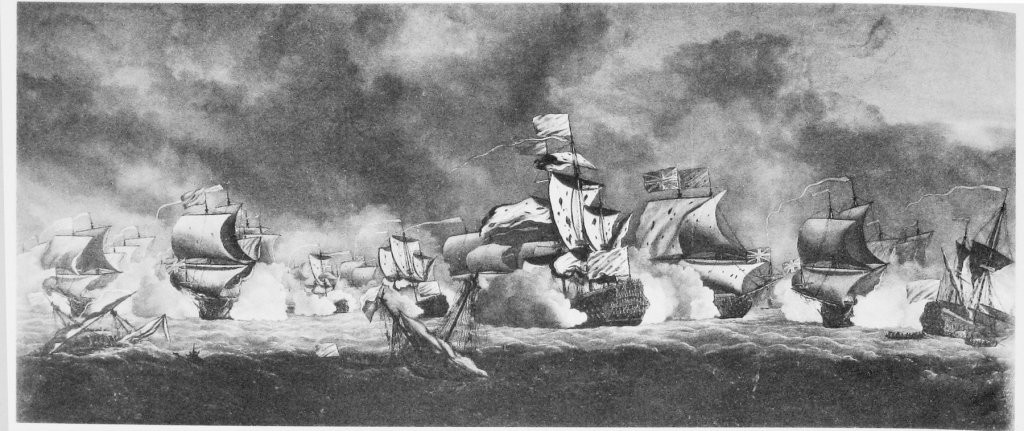 Last night, I went to visit Dan Pariser who very graciously invited me over to discuss my project. After offering a number of helpful tips and suggestions, Dan brought out his recently acquired, two-volume boxed set of the collected paintings of the Van de Veldes, by M.S. Robinson.
Last night, I went to visit Dan Pariser who very graciously invited me over to discuss my project. After offering a number of helpful tips and suggestions, Dan brought out his recently acquired, two-volume boxed set of the collected paintings of the Van de Veldes, by M.S. Robinson.
Upon looking up SR in the index, I discovered the above thumbnail of a large (4'x8') painting of The Battle of Barfleur. I had never seen this painting before, and was immediately intrigued because it features SR, from her port quarter, facing off against Britannia. Here is a close-up of her stern detail:

Upon publication of these twin volumes, it was noted by Robinson that the painting was housed in a private collection at Euston Hall, in Sussex. The painting is not directly attributed to either the Elder or Younger VDV, but is believed to at least be a product of their studio.
Later, last night I sent an inquiry to Euston Hall, and the curator responded, promptly, this morning. She told me that, in her time there, the painting had not been in residence and that she was not familiar with it.
My next move will be to contact the National Maritime Museum in Greenwich to see whether they have it in their collection, or know its whereabouts. I am hopefull that they, or some private owner, can ultimately provide me with a high-res close-up of SR.
Given the rather large size of the painting, this small thumbnail suggests that there is quite a bit of detail painted into the portrait, which may be insightful under magnification. My internet image searches have turned up exactly zero results connected to this painting, so I suspect that it has not changed hands often, and as a result, there are few photographs of the work in the public realm.
That the work is attributed to the VDV studio lends the image of SR a degree of credible authenticity that is more or less suspect at the hands of other contemporary marine painters.
I am sending this out to the MSW community in the hope that some of you may be familiar with the painting, know where it is housed, or even possess some better imagery of the painting that they can share.
As always, any help along these lines is greatly appreciated, as are any visitors to my page, for taking an interest in this project. And special thanks to you Dan, for availing me once again, of your hospitality, insight and resources.
Thank you,
Marc
-
-
-
One thing Cedric has pointed out, with his build of La Reyne, and which becomes much more apparent with the hull cut down, is that the sheer of the wales at the bow rises too sharply. In fact, the sheer at the bow should be flatter and more closely to parallel with the waterline, only rising sharply aft of the main channels. Cedric, I believe, will be making efforts to correct this flaw because he is re-positioning all of the port locations to correspond with 16 port openings per side, on the first battery.
This is one issue I will reserve for the future scratch build. It bothers me, somewhat, but not nearly enough to go to all the trouble of correcting it.
-
And so, the long slow journey begins and there's no turning back now!
I had the opportunity to get into the shop early, before work began today, and I cut away the bottom of the hull on the bandsaw. The blue tape indicates the raised waterline by 3/16". The instant you cut away the lower hull, IMO, this becomes a much better model.
Here, I'm showing the hull halves separated by the 1/2" I will be adding at the stem. The distance across the transom was approximated by eye, but that is very close to what it will be. I'm making a long sanding block to flatten out the waterline. Once I do, these hull blanks should stand with their stem pieces perfectly parallel to each other.
I'll be saving the lower hull pieces in order to experiment with my treenail and through bolt simulations, as well as for working up a layered paint protocol that will simulate the look of wood on the water, but not overly weathered.
As this is a diorama model of the ship, shortly after her re-fit in 1689, I am thinking about placing her at anchor, on the Penfeld river with the Brest Arsenal towering in the near distance, the morning sun rising to illuminate her gilt work and Tourville on a launch, being rowed out to take comand of his ship.
Next week, I go on vacation, and I may bring the blanks with me to start detailing. Substantive updates like this will be slow coming, because I will still work on the drawing when I can. But this is a start, anyway.
-
A well deserved victory lap, Ken! I have really enjoyed all of the care and attention you have taken to clean up the castings, as well as your re-working of the stern gallaries, in order to make everything line-up properly. This really is turning out to he a magnificent model.
-
Hi Ken,
I've been meaning to ask you for some time about what particular gold paint you are using, so I am glad to know what that is now. But I also like your sepia tone distressing. Is that also a Tamaya acrylic based wash, or some other brand? And how much must you dilute it to get these results, which really pick out the creases and crevasses, without muddying the gold?
-
-
The other interesting thing to me, about the Bakhuizen portrait is that the way he has chosen to "illuminate" Soleil Royal as almost a guilden, glowing object suggests that much of her ornament would, in fact, be guilded.
I still like the idea of using yellow ocher for a lot of the background, moulded detail of the lattice frieze, which would be ornamented with select guilded ornaments. It would look distinct from other models I've seen, and I think it would give the guilded ornaments a jeweled aspect. This is mostly an artistic choice.
-
As a matter of fact, Dan, this was the painting that gave me that idea in the first place. It isn't clear whether that scrolly thing represents a decorative banner or the rudder chains, or what. I was reading in Laughton, recently, that the surviving ornamentation of La Reale makes use of this motto, "nec pluribus impar" on the tafferal, which also features Apollo and his horse drawn chariot.
I have been thinking about your advice concerning following seas and carved ornament close to the waterline; if I decide to include this bit of ornamental license, I thought that instead of doing a relief ornament, the scrolled motto could be painted on. In this time period, for the Dutch at least, it was not uncommon to paint decorative friezes onto the coved arch of the stern counter. On SR, this area has too much other necessary ornament and the tafferal with Apollo is similarly crowded, but a painted scroll beneath the chase ports is both practical and somewhat plausible.
I remain steadfast that the motto should have a place somewhere on the ship, and am open to suggestions. The sentiment behind the motto seems to speak to the grandiosity of Louis XIV's ambition and self-conception.
-
What I like about this Bakhuizen portrait is that it provides some sense for the grandeur that must have been Soleil Royal. From my perspective, there are two corroborating pieces of information that can be taken from this portrait (painted by a man who likely had first-hand knowledge of the ship), however the painting raises many more questions than it answers.
First, like the Peter Monamy paintings of the Destruction of Soleil Royal, Bakhuizen shows SR's upper bulwarks painted blue; deep ultra-marine blue, in this case, as opposed to Monamy's lighter blue bulwarks that are topped by ultra-marine and fleur-de-lis arming cloths.
Earlier in my discussion of the ship's colors, Mr. Lemineur had posited that it was feasible that her upper bulwarks would have been painted red (like the Vasa), with ultra-marine reserved for sections of the tafferal. These contemporary artist depictions, along with the color Compardel interpretation of the Berain bow and stern are enough supporting evidence for me to paint my model with a lighter blue for the majority of the upper bulwarks, and ultra-marine as a secondary band of color, just above the main deck guns. I've thought of a way to use the lattice frieze, at this level, as an interesting line of demarkation between these two colors that will set off the row of gilded fleur-de-lis nicely. I will also use ultra-marine for the recessed paneling of the quarter galleries and stern.
The other point of confirmation with the Bakhuizen portrait is the apparent presence of an upper bulwark frieze, which is, here, represented as a continuous field of fleur-de-lis. One can argue that with the ship set in the middle distance, from an artistic perspective it would be easier and better to simplify the depiction of the frieze, rather than to more accurately suggest the latticework, the shells and scrolls, etc, of the Berain drawing. Monamy's painting also suggests the presence of some kind of frieze. So, in summary, there should be an upper bulwark frieze, and I personally enjoy the layered complication of the Berain lattice frieze, so that is what I will model.
But, then, there are the questions that the painting raises. First, are questions of perspective as they impact the relative realism with which he depicts the various ships in the portrait. Bakhuizen has a tendency to lavish more time and attention to the realism of the central vessel, and less so to the rest of the composition. The stern of the English ship seems poorly proportioned, in comparison to similar sea battle paintings by the VDVs, for example. And there are many examples of details that are out of proportion on the ships around SR.
But it is SR, herself, that raises the most questions. First, he shows her as having only two levels of stern windows, but with a similarly shortened tafferal as seen in Berain's stern drawing. Yet, she is still depicted as a large three-deck ship of 100 guns or more. I have not encountered anything yet to suggest that the ship was cut down and lost a deck during her re-fit. But if a three deck ship like La Reyne, for example, only has two rows of stern windows, she would also have a correspondingly taller tafferal - which La Reyne does. Along that line of inquiry, I also think that Bakhuizen is mis-representing the sheer of the stern, which appears too flat.
So, there's that, but there's also the apparent open stern balcony, just above the counter. The thing is that it does not appear to be a projecting balcony, but one that is recessed within the quarter galleries like a screen bulkhead. As far as I know, this was not a feature of French practice at this time in the latter 17th century.
There does appear to be some rudimentary depiction of Apollo and his horse-drawn chariot on the tafferal. The tafferal does appear to have the reverse cyma arched pediment. And the four seasons are represented as supporters between the middle deck stern gallery and the main deck windows above it.
But then, those seasonal figures seem to wrap around to the quarter galleries, which is wholly inconsistent with any other depiction of the ship. The theme was exhausted on the stern (winter, spring, summer, autumn), so what would these figures be on the quarters?
The Bakhuizen portrait does seem to confirm round ports on the main deck level, but he appears to show the quarter galleries as being completely closed in, which is something that I don't agree with.
So, in summary, it is a fascinating portrait and appropriately dramatic, but a problematic source of information.
-
I'm curious EJ about this model of SR that you are showing. It seems to have applied the plastic, Heller stern balconies and quarter galleries (painted "walnut" brown to match the planking) to a wooden model. Or, perhaps someone veneer planked over the plastic kit? Anyway, it's interesting. Do you have other pictures of this model?
-
-
Hi EJ,
I think you are referring to the "round-up" of the stern. Most commercial models of square-tuck sterned models present the transom as being flat, but this was not the case in actual practice. There is, as you note, an upward camber of the transom wale (beneath the chase ports) that follows the arc of the stern counter, as well as the galleries above it. However, there should also be a corresponding outward arc of the transom, from the ship sides toward the sternpost. This arc in two planes (upward and outward) carries up and past the stern counter into the fashion pieces. All of the Tanneron models display this characteristic (see stern pics of L'Agreable and Le Brilliant on the first page of my build log), and many good pictures of the Vasa's transom and upper stern display this feature to good advantage.
On one of the arsenal sites I found this proposed framing for SR's stern:
Below the stern counter, this plan correctly shows the framing for the round-up of the transom, however, it seems to show the upper framing of the fashion pieces as being flat, which is incorrect. The dual arc of the transom timber, above the stern post, is what provides a footing and gives shape to the coved supports to the fashion timbers. Round-up should be continued into the upper stern, but here it is not.
The other interesting feature of this framing diagram - for those who are interested in developing plans for a scratch-build of SR - is that it shows the correct profile of a pre-1673 stern, where the widest point of the stern is at the middle deck level, as opposed to the lower deck level on the Tanneron model of SR (which is actually a model of the second SR, ex Foudroyant of 1693).
My only other contention about this framing for the first SR (1669-1692), is that the framing of the stern counter should close-in this lowest stern balcony, which shouldn't be a balcony at all. Otherwise, I quite like the shape of the plan and will tweak it for a future scratch-build. I think the cyma curve line of the tafferal is very well drawn, here.
- Sargon, mtaylor, zoly99sask and 2 others
-
 5
5
-
That would be excellent, Cedric, if you don't mind doing that. Also, what you are suggesting about windows in the officers' quarters makes sense. That seems quite plausible to me. Perhaps Michel or Neko will weigh in, at some point. If they are officers' quarters, then some attempt at glazing should be made, no?
- vossiewulf and EJ_L
-
 2
2
-
Yes, I will not be modifying the sheer of the wales, nor the upper bulwarks. I will, however, make small adjustments to my tracings of the quarter galleries. And I may, yet, remove that upper most round port, and/or pierce two octagonal ports. Not sure about all of that, as yet, but I will figure it out. My inclination, though, is to leave the round port, arm it with a gun, and add both octagonal ports, un-armed. My reasoning is that adding the octagonal ports, allows for greater fidelity to the Berain drawing, while keeping the round port maintains my armament at 110 guns. A compromise.
- vossiewulf and EJ_L
-
 2
2
-
Cedric, do you have that Boudriot illustration handy? Can you share that digitally? I would love to see that.
- EJ_L and vossiewulf
-
 2
2
-
I was just looking at the comparison photos of SR to Couronne - JeezUS! That is a huge model!
- zoly99sask, Elijah and EJ_L
-
 3
3
-
I'm having a little Powers myself, right about now.
- Elijah, popeye the sailor, EJ_L and 1 other
-
 4
4
-
Stay strong and stay thirsty, my friend!
- Elijah, popeye the sailor, EJ_L and 1 other
-
 4
4



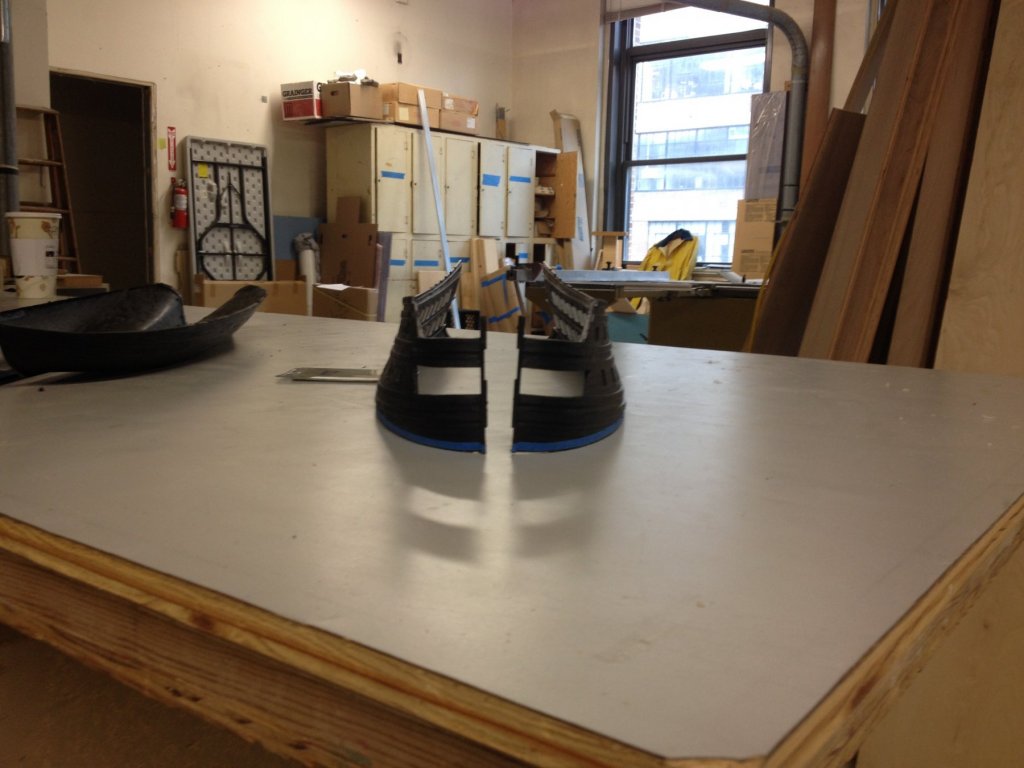
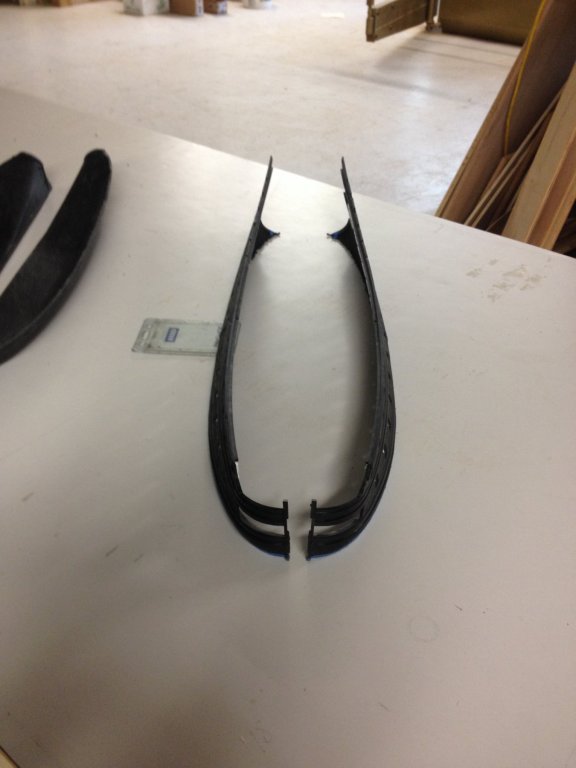
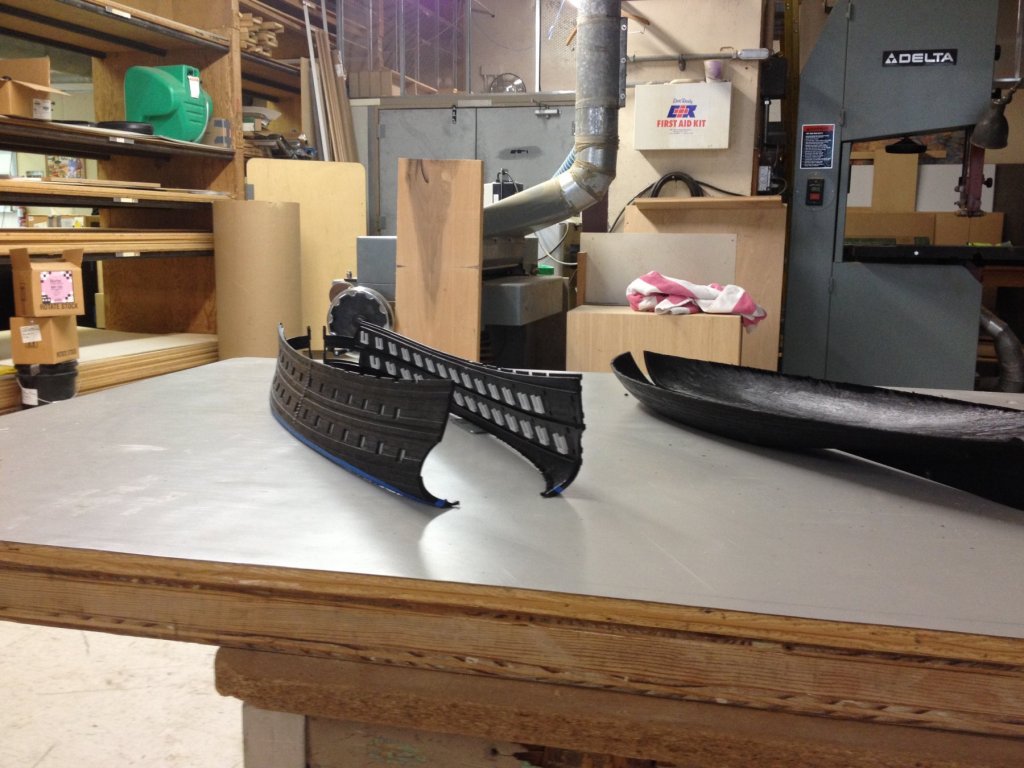
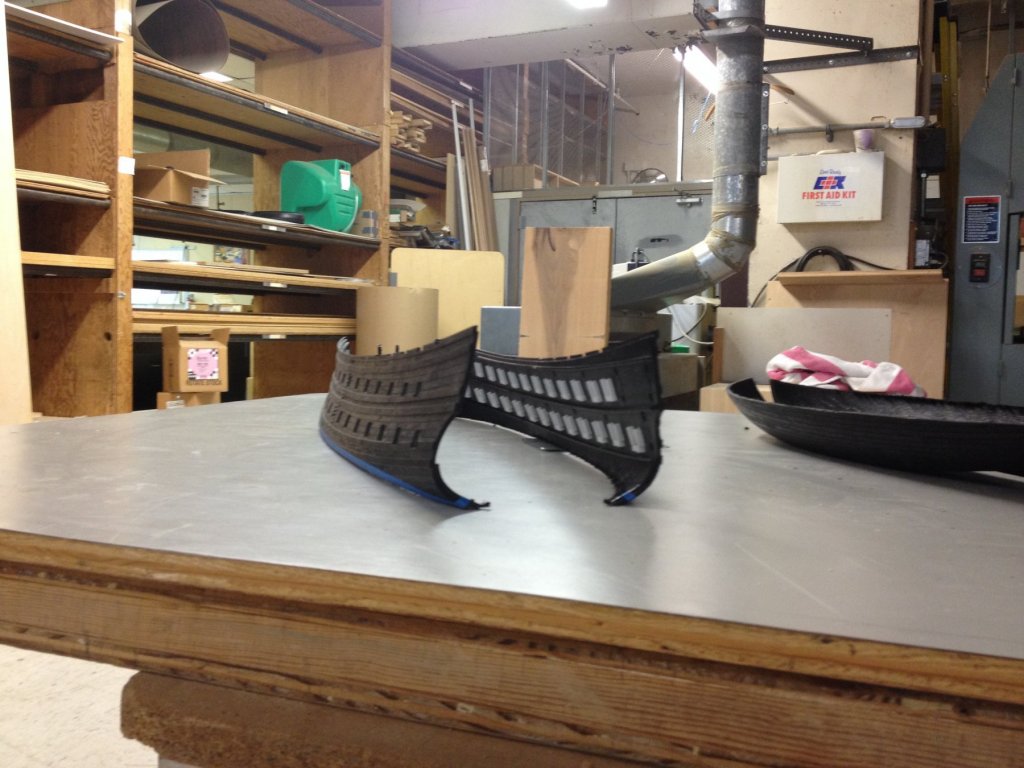
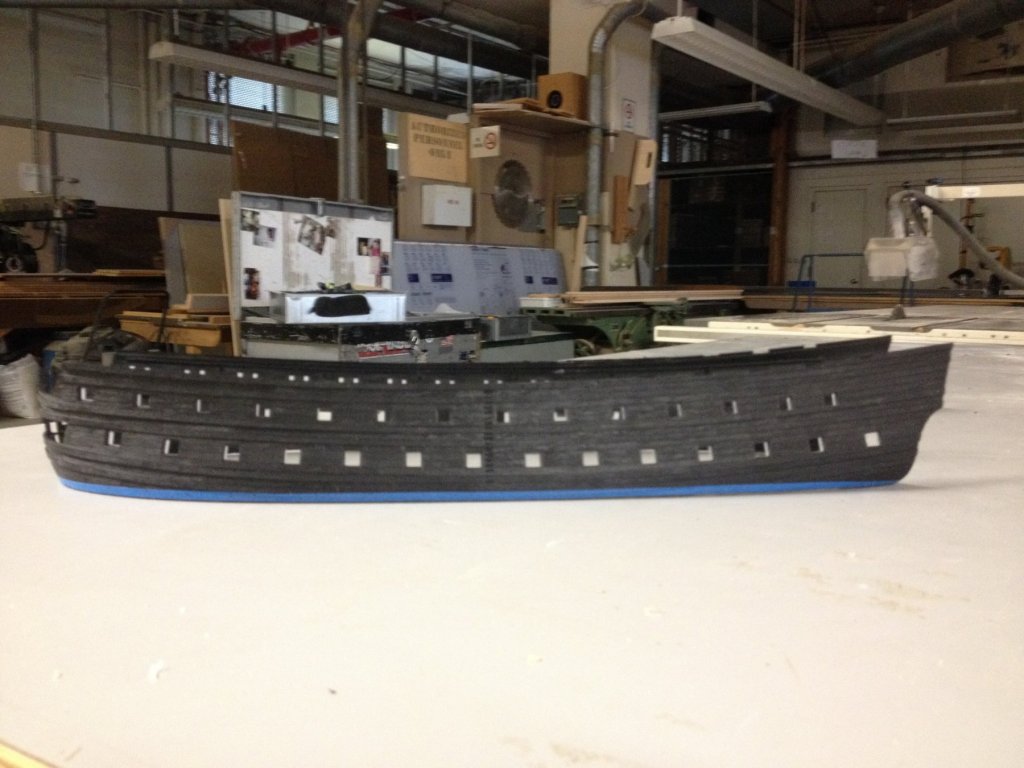
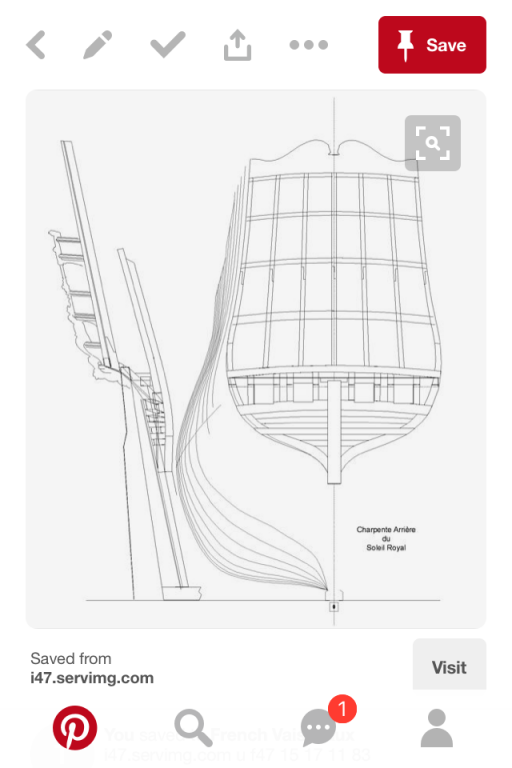
De Zeven Provinciën 1665 by Dražen - Scale 1:45
in - Build logs for subjects built 1501 - 1750
Posted
Yes, it is sad about the Provincien Project. I had hoped to bring my family to the Werf for the launching of the ship.
Had it not been for the determination of Willem Voss, neither the Batavia nor the Provincien would ever have seen the light of day. In my mind, Mr. Voss is a sort of courageous figure like Anders Franzen was for Sweden.
To Jan: might you have been someone I was acquainted with, back in '03? As I recall, the Director of the Werf at that time was a very tall man named Jan, and Willem's son was also named Jan.